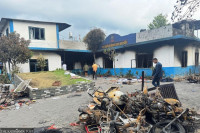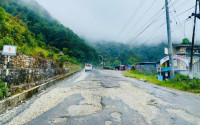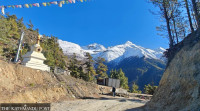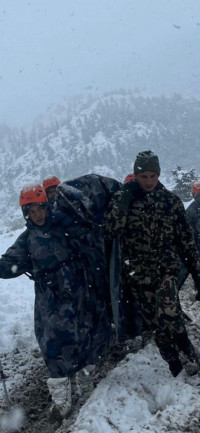Gandaki Province
Budhigandaki project delay freezes locals’ land and options
Seven years on, project-affected people in Gorkha and Dhading districts have been unable to use, sell or pledge land for loans.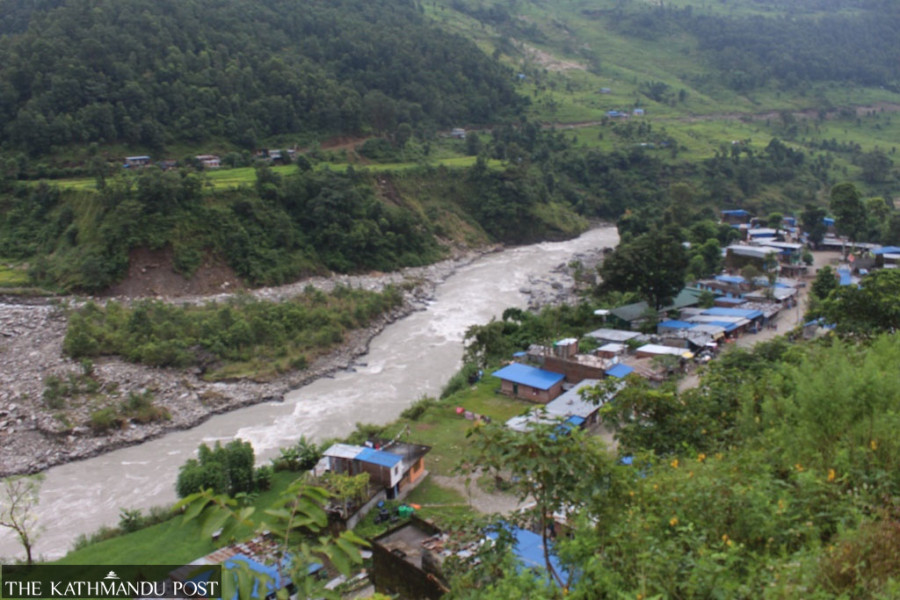
Hariram Upreti
Bishnu Bahadur Shrestha of Arutar in ward 9 of Arughat Rural Municipality, Gorkha, has lived in uncertainty as his 15 ropani (0.76 hectares) of ancestral land has been frozen over the past seven years. The federal government in 2019 ordered to freeze around 300 ropani (15.26 hectares) of land in the Arutar area of ward 9 and the Chanaute area of ward 10.
“I have seven ropani of land in Arutar and eight ropani in Chanaute, all restricted due to the Budhigandaki Hydropower Project. I can’t sell my land, nor use it as collateral for loans to pay for my children’s education or medical treatment,” Bishnu lamented.
Not only Shrestha but also many locals complain that they are hardest hit by the government’s decision. “One of my neighbours couldn’t secure education loans for his daughter who is pursuing medical science. Another woman with physical disabilities planned to seal a plot of land for medical treatment but she could not,” said Shrestha. “We don’t understand why the government continues freezing our land when the project itself is not moving forward.”
In May 2019, the Budhigandaki Hydropower Project’s Environment, Compensation Distribution and Rehabilitation Unit marked nearly 300 ropani of land in Arutar and Chanaute as “frozen” to facilitate resettlement for displaced families of the country’s largest hydropower project. However, despite the restriction of the land, actual rehabilitation and compensation processes have remained stalled, pushing locals into financial and personal crises.
Seven years after the government marked thousands of ropani of land in Gorkha and Dhading districts, the project area, affected families are unable to use, sell, or pledge their land for loans. Neither the project nor the compensation distribution process is progressing. What has been billed as Nepal’s largest hydropower venture, has instead left many villagers trapped in uncertainty.
According to official data, lands in multiple villages of Gorkha were frozen: 133 ropani in Arutar, 53 in Chanaute, 32 in Namjung, 111 in Dhawa, 624 in Borlang and 96 in Darbung. The freeze was meant to secure land for resettlement and protect social, cultural, and religious sites affected by the massive 1,200 MW reservoir-based hydropower project. Yet, seven years on, there is no clarity on the rehabilitation model of the displaced people.
The Budhigandaki Hydropower Project, which spans 13 then VDCs of Dhading and 14 VDCs of Gorkha, is expected to displace a total of 3,560 families and other 8,153 families will be affected in both districts. The lands have been frozen for the resettlement of the displaced people but their resettlement is left in limbo.
According to the affected people, they agreed to accept below-market compensation with the hope of quick project implementation, but their patience is now wearing thin.
Ganesh Kumar Shrestha of ward 9 of Arughat said repeated pleas to ministries, including the former energy minister Pampha Bhusal and even former prime minister Pushpa Kamal Dahal, yielded no results. “No consultation, no progress, just endless promises,” he lamented. “Either move the project forward or release our land—private property should not be frozen indefinitely,” he demanded.
The frustrations are compounded by the lack of basic services in submerged areas. “Forget the project; even small infrastructure projects like drinking water and roads are halted because of the 'submersion zone' label,” said Bishnu Angami, a resident of ward 33 of Gandaki Rural Municipality. “Development is paralysed, and our lives are stuck in limbo.”
Last year, the government shut down the dedicated Environment and Compensation Unit in Siurentar in Gorkha and replaced it with a field office under the Budhigandaki Hydropower Company. Yet, even after restructuring, progress has remained negligible. “The annual budget allocation doesn’t even reach the project office,” said Hare Ram Dhakal, coordinator of the Budhigandaki Project National Concern Committee.
In the current fiscal year 2024-25, Rs500 million was allocated for the project, but the company has not received the funds. Dhakal said compensation for around 23,000-24,000 ropani of land is yet to be provided. “Even the money that comes in remains unspent, and the government has shown no interest in accelerating project construction,” he said.
Complicating matters further is the project’s uncertain modality. Successive governments have failed to decide whether the project will be built with foreign investment or domestic capital. A decade after compensation distribution began, the project’s future remains shrouded in uncertainty.
Recently, Finance Minister Bishnu Paudel announced that the project will be built under a public-private partnership (PPP) model, converting state investment into shares. This has sparked controversy, with former Prime Minister Baburam Bhattarai calling it the “death of Nepal’s national dream.” Bhattarai, who had championed the project during his tenure, said the PPP move was “an inexcusable betrayal of national interests.”
As of now, a total of Rs42.7 billion has been spent on compensations for 49,095 ropani out of 58,153 ropani of private land. However, landless settlers and those on government and unregistered land, especially in areas like Arughat Bazar, have not received compensation. Over 100 tenants and 150 families occupying state land are yet to be compensated.
The Budhigandaki Hydropower Project, once touted as a game-changer for Nepal’s energy landscape, has instead become a symbol of bureaucratic inertia and unfulfilled promises. Local leaders and affected families have urged the government to take immediate action—either restart construction or release frozen lands. “We’ve waited long enough. If the government cannot build this project, it should at least free us from this endless suffering,” said Ganesh.




 6.21°C Kathmandu
6.21°C Kathmandu.jpg)

